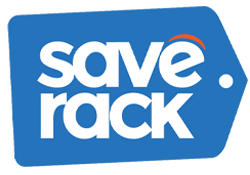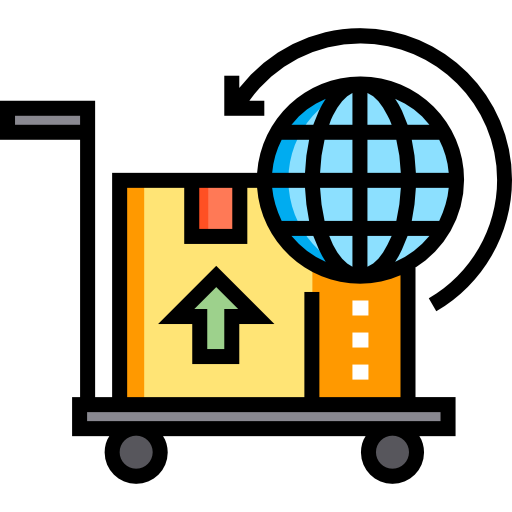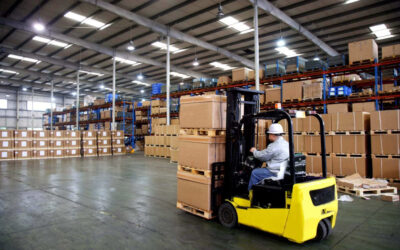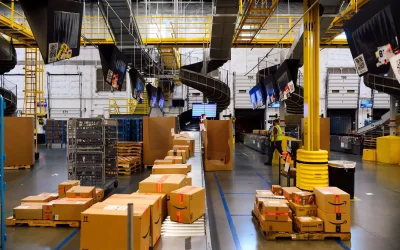You need the correct product, good marketing and you should never forget about your customer to make an ecommerce successful. Yet, for all of its promise, even a well-oiled online store can hit a wall if it doesn’t have an equally well-oiled fulfillment partner.
Customers who wait after ordering are very unlikely to come back. According to industry data, almost 70% of shopping carts are abandoned, with slow shipping being one of the most common reasons. Which is why working with the Best Ecommerce Fulfillment Centers can spell success for your business on a long-term basis.
In this guide, we will discuss e-commerce fulfillment and examine how a strategic approach to fulfillment can positively impact customer satisfaction, operational efficiency, and the ability to scale your business successfully.
REQUEST A QUOTE!
What is E-commerce Fulfillment and Why does it Matters?
It’s the last step in the totem pole of a supply chain that starts with warehousing and shipping. This includes warehousing products, order picking/consolidation, shipping outbound orders to the end consumer timely. Fulfillment is a major factor determining your profit margin and business reputation, but it is also frequently underestimated.
In the increasingly competitive world today, businesses who delineate fulfillment this way and sync it with the customer experience will prevail.
Ecommerce has two significant advantages over other industries…let me break this down for you. The first is scalability. But without a reliable logistics chain, the break in service can quickly happen after launching. As an example, O2 Hydration saw a dramatic difference in expected delivery time of their online vs retail consumer. Undergoing the need for scalability, they decided to go with a fulfillment partner that could handle the pace of e-commerce growth.
Understanding the Fulfillment Workflow
Receiving and Inbounding Inventory
It starts with inventory at the warehouse. Each shipment must be:
- Matched with an Advance Shipment Notice (ASN) to confirm digital and physical document parity.
- Quality Inspected to check for items damaged in the route. Flag damaged goods for replacement, repair or liquidation.
- Stored Efficiently, with SKUs assigned to labeled bins or shelf locations. This data is updated in the Warehouse Management System (WMS) to ensure accurate stock visibility.
It is this setup done wrong that you have to correct for so many times until your inventory management resembles a living organism and the order process isn’t an excuse for relaxing.
Simplify Your Fulfillment!
Call us at 515-717-0429
Warehouse Operations
When the inventory is received, it is either prepared for imminent shipment or strategically positioned in fulfillment centers. Businesses can now adjust to changes in demand on the fly.
Features of the contemporary fulfillment centers like those of Save Rack:
- Customer Geography Based Inventory Reshuffling can be achieved using Dynamic Storage Allocation.
- Real-time Inventory Synchronization with multiple sales channels, No More Over-sales or order delays.
Optimizing Storage
Effective storage solutions minimize picking errors and reduce overhead costs. Common techniques include:
- Location Labeling, which assigns designated storage areas for each SKU.
- ABC Analysis, a method that categorizes products based on movement velocity and stores high-volume SKUs closer to packing stations.
- First In, First Out (FIFO) practices that ensure older stock is shipped first, reducing waste and preventing expiration.
Inventory Management
Accurate inventory management is essential for maintaining customer satisfaction and optimizing operational margins. Tools such as:
- Warehouse Management Systems integrate with ecommerce platforms to provide real-time visibility.
- Cycle Counting, which allows for regular spot checks, helps maintain inventory accuracy without disrupting operations.
Combined, these practices support consistency and reliability across the entire fulfillment network.
Picking and Packing
Order fulfillment begins with the WMS generating an optimized pick path. Depending on order volume and complexity, different picking methods may be used:
- Single-Order Picking for high-value or low-volume products.
- Batch Picking to collect multiple orders with similar SKUs simultaneously.
- Zone Picking, which divides the warehouse into zones, with different teams responsible for specific areas.
Once picked, orders are packaged to balance cost efficiency with product safety. This includes:
- Selecting right-sized boxes to reduce shipping fees.
- Using protective materials such as air cushions or kraft paper to prevent damage.
- Including packing slips for clarity and return processing.
This step is vital to ensuring customer satisfaction and operational efficiency.
Shipping and Delivery
The delivery phase directly affects customer experience and brand perception. Save Rack offers clients:
- Carrier Flexibility, allowing businesses to choose the best service based on price and speed.
- Reliable Transit Times, with options for same-day, 1–2 day, and standard delivery.
- Tracking Integration, providing end-to-end visibility from warehouse to customer.
Consistency in delivery times is critical—whether the order is B2C, wholesale, or boutique.
Returns Management
An effective fulfillment strategy includes a structured return process. With ecommerce return rates on the rise, the ability to handle returns efficiently can set a business apart.
Standard practices include:
- Inspection of returned goods to determine resale viability.
- Restocking of items deemed sellable, with system updates to reflect new inventory levels.
- Vendor Coordination for damaged items requiring manufacturer credits.
- Sustainable Disposal of unsellable items in compliance with environmental standards.
Why Customization Matters in Fulfillment
Each business has unique needs based on its product line, customer base, and delivery expectations. A standardized fulfillment model may fall short in meeting those demands.
Custom solutions may include:
- Shipping Configuration that allows for both budget and expedited delivery options.
- Inventory Planning that reflects seasonal demand or promotional periods.
- Customer-Centric Delivery options such as scheduled shipping or localized pickup.
By customizing fulfillment workflows, businesses can reduce waste, improve delivery consistency, and enhance the post-purchase experience.
Choosing the Right Fulfillment Provider
There are many advantages of working with a well known provider like Save Rack some of which include :
- Get Your Products More Quickly from regional warehousing and best carrier relationships.
- Reduced Costs — the cost of shipping will drop when all shipments are consolidated, and you receive volume-based shipping rates.
- Season/Up surges (Fast Business Growth) — Operational Scalability
- Integrated System to keep an eye on orders IN/OUT of both the platforms with real inventory tracking.
- Better Customer Care (assistance and quality checks, returns & kitting)
The objective is not just in executing orders but to ensure that clients are likely to want to return.
Final Thoughts: Selecting the Best Ecommerce Fulfillment Centers
The Best Ecommerce Fulfillment Centers Investing in the best ecommerce fulfillment centers is more than just logistics: It is about creating a fulfilling experience that represents your brand and connects to business goals and consumer expectations of today.
With Save Rack you have same-day order processing, support through over 100 platform integrations and dedicated customer service. From our climate-controlled warehouses to our live-inventory software, we do everything with the intent of optimizing your ecommerce fulfillment purposes.
We were born in Florida, but we serve clients across the nation with a skill-set crafted to get our ecommerce clients successful. Save Rack means accuracy, accountability and the investment of real partners with you in your growth.
Save Rack has what it takes to bring the ideal Ecommerce Fulfillment Centers in Bulk, on time, every time.









